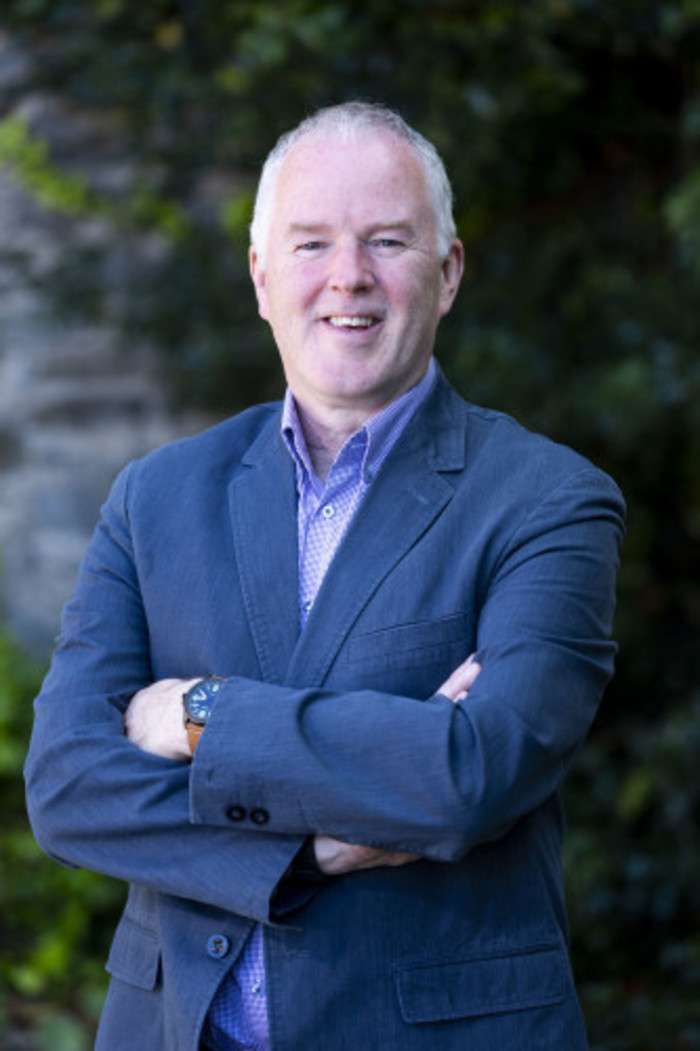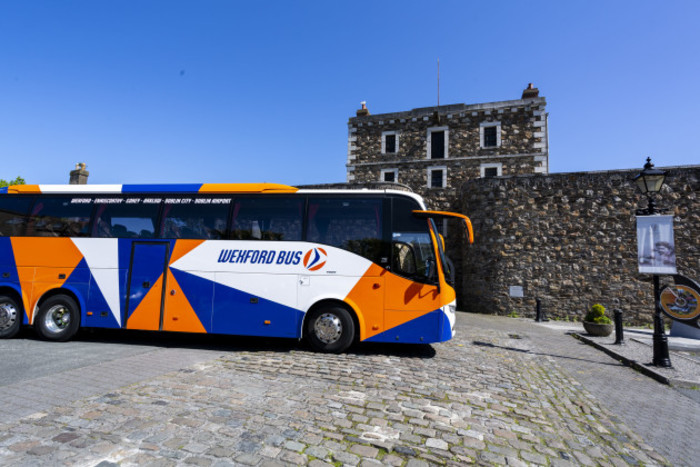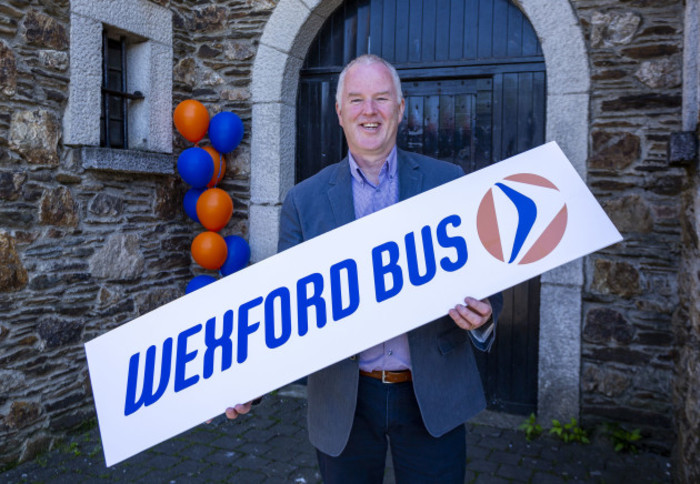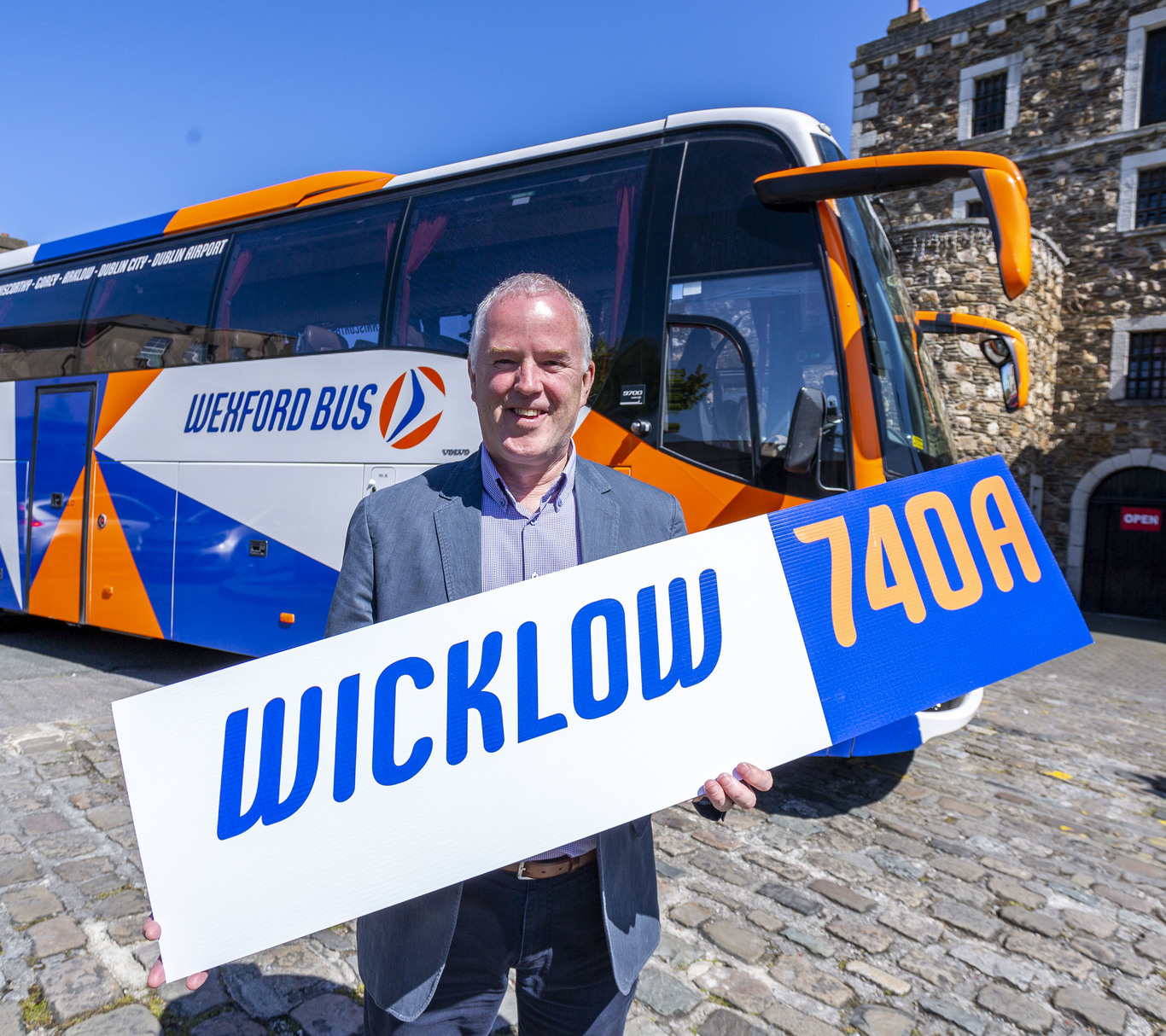‘It's a bit of a David-and-Goliath situation, but being smaller we can be more dynamic’
As part of our How My Business Works series, we profile Wexford Bus.
WEXFORD IS FAMED for sea, strawberries and the Slaney – but the county can also lay claim to one of the biggest independent bus operators in Ireland.
Brendan Crowley, the managing director of Wexford Bus, says that he never set out with a grand entrepreneurial vision – he was simply trying to solve a local problem.
“It all started because I realised there was no real good public transport in Wexford,” he tells Fora.
“It was very poorly serviced – in some cases you had a bus once a week, but there was no proper urban bus service in Wexford town at all.”
In 1996, Crowley introduced a local shuttle bus service into the town, running the business part-time while he was still working in the public sector.
“I’d say a lot of people wouldn’t even remember that now at this stage. It was only little buses running around the town.”
 Brendan Crowley
Brendan Crowley
However, the service gradually grew in popularity and the business became a full-time job for Crowley and his wife Lorene.
In 2007, after a decade of developing the local service, there was an opportunity to push outside of Wexford.
“There was a chance to operate a direct service between Wexford and Dublin Airport, similar to what Aircoach does in Dublin,” Crowley says.
Wexford Bus invested in a number of coaches and started operating four services a day between the south-east and the capital’s airport, before expanding to regular daily services between Wexford and Dublin city as well.
“We were lucky enough that we kind of identified a niche market,” Crowley adds.
“We didn’t have any experience of running our own business. But I saw an opportunity I suppose and I just said let’s give it a try and see what happens.”
Gaining growth
With its rapid expansion in recent years, Wexford Bus has increased its team to around 60 employees, which includes office staff based in Wexford, as well as drivers and a maintenance crew.
As the company has grown, however, the nature of the business has also changed, with greater focus placed on links to the capital city.
“I suppose we initially set out as a tourism kind of business, bringing people to and from Dublin Airport, but now at this stage it has grown very much into a daily commuter service,” Crowley says.
“We bring 700 or 800 people per day in and out of Dublin city. Last year we had 750,000 passengers in total, this year we’re expecting to exceed one million.”

As with all growing businesses, however, investment was needed for Wexford Bus to continue its expansion.
“Demand for our services grew well, which required a significant increase in capacity. That’s always got a financial requirement, so we were going cap in hand to the bank quite frequently.
“The bank has always been good to us, but you still have to be happy that you’re not overstretching yourself – you’re making big commitments so you’ve gotta stress test everything you’re doing and be really sure that it’s the right move.”
So far, the investment has paid off, and last year Wexford Bus recorded turnover of €5.8 million, with profits continuing to climb.
Although a lot of other Irish businesses struggled during the economic downturn, Crowley says that Wexford Bus was a “reasonably recession-friendly business” and turnover continued to increase every year.
“At that time a lot of people had to park up cars and start using public transport, so that probably helped us to grow further. We’ve been lucky in that many people who probably started using our service during tough times have decided to stick with us.”
David and Goliath
Although Wexford Bus was initially launched to service an untapped market, as the business expanded it had to deal with some hefty competition from major players.
Crowley says that Bus Éireann, which operates a number of daily services from Wexford and Gorey to Dublin, is his main threat, but he adds that a little bit of competition is good for the industry.
“Since Wexford Bus started, Bus Éireann has increased its number of services to compete with us. So ultimately the passenger wins, because now there’s a bus service every 30 minutes from Wexford to Dublin.
“Yes, it’s a bit of a David-and-Goliath situation – we don’t have the finances of the State behind us, we don’t have that comfort blanket. But being smaller we can be more dynamic and we can probably respond to customers’ needs a little bit quicker.”
Wexford Bus partially differentiates itself with lower ticket prices. Its return fare from Wexford town to Dublin Airport costs €32, compared to €34.20 from Bus Éireann.
But Crowley says he’s aware that tickets are still a “significant expense” for people who are commuting into the city every day.
“In any competitive market you’re looking for that edge, but I suppose our main focus is our quality of service really.
“It costs money to travel to Dublin, and it can be a significant part of the passenger’s day – a lot of them are up at five o’clock in the morning to travel.
“So for us it’s really important that people are getting a premium service and they’re getting value for money.”
Future plans
While Wexford to Dublin is the company’s busiest route, in recent years it has also introduced services to Waterford and Carlow, and most recently from Wicklow to Dublin.
Although Crowley jokes that Wexford could become the “best-connected place in Ireland”, there are a finite number of routes that can be sustainably run out of the south-east.
For now, the company is focused on improving its business, rather than increasing its footprint.
“We’re always looking for opportunities to expand, but I suppose the most important thing for us right now is to keep working on our existing services to make them as efficient as possible,” Crowley says.
“One of our biggest challenges is matching capacity with demand – because we carry so many people in and out of Dublin every day, trying to predict when they’re all going to come home is a problem.”
Wexford Bus has been investing in the technology to allow passengers to pre-book seats – providing a service for customers but also helping the company to plan its logistics.
“We’ll never know how many people are definitely going to be on a bus, but we’ll have all of our regular people lined up, so it gives us an opportunity to move buses around, to try and match it as best we can.
“When the system works it’s great, but nobody knows it’s working because it’s just happening nicely in the background and everything is running smoothly. But when it doesn’t work you know straight away.”
 Brendan Crowley
Brendan Crowley
Elsewhere, one of Crowley’s main aims for the future is a focus on sustainability and “convincing more people that public transport is the way to go”.
“One of the challenges for the future of the sector is that I think the level of traffic congestion that we’re encountering now is becoming worse. The roads are stretched to the limit,” he says.
“We run into traffic at six o’clock in the morning in Wicklow before we even get near Dublin at all. It’s a growing problem and I think there’s a real need for serious consideration.”
He says that he hopes his business, which started as a small solution to a local problem, will have a bigger role to play in Ireland in the future.
“If you look at the origins of Wexford Bus, it was in providing services where the State did not provide them. So we filled a gap where there was no public transport and now we’d like to continue that on a much larger scale.”







